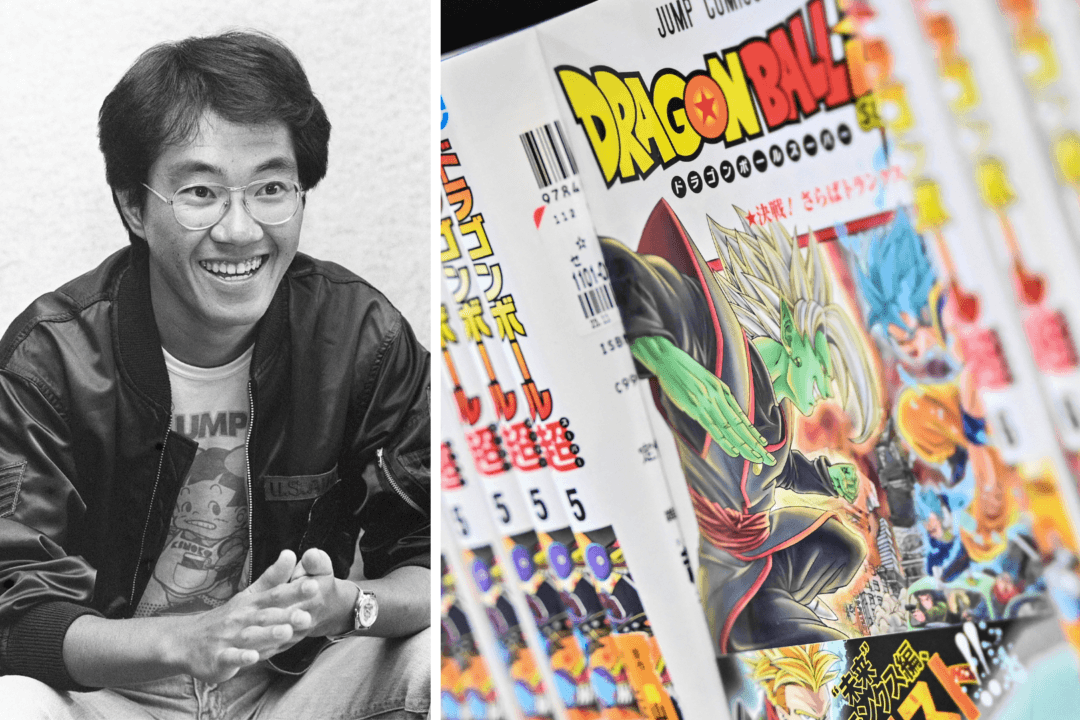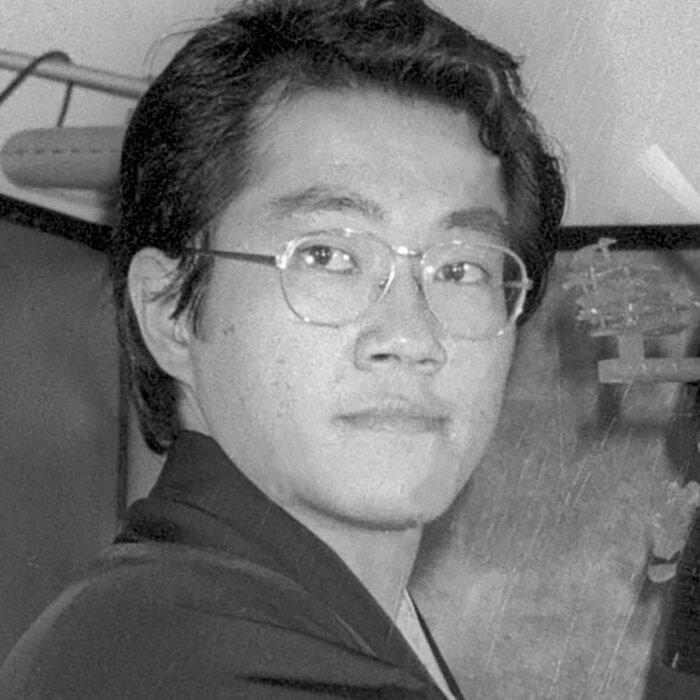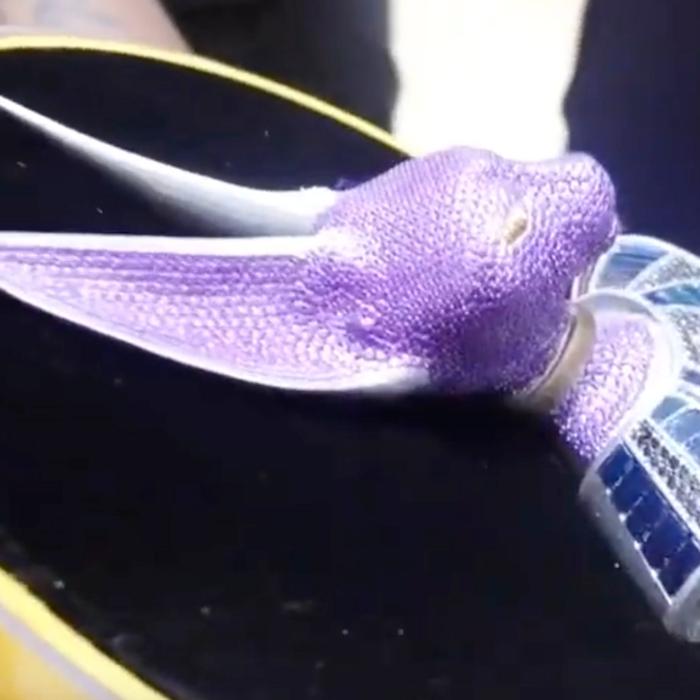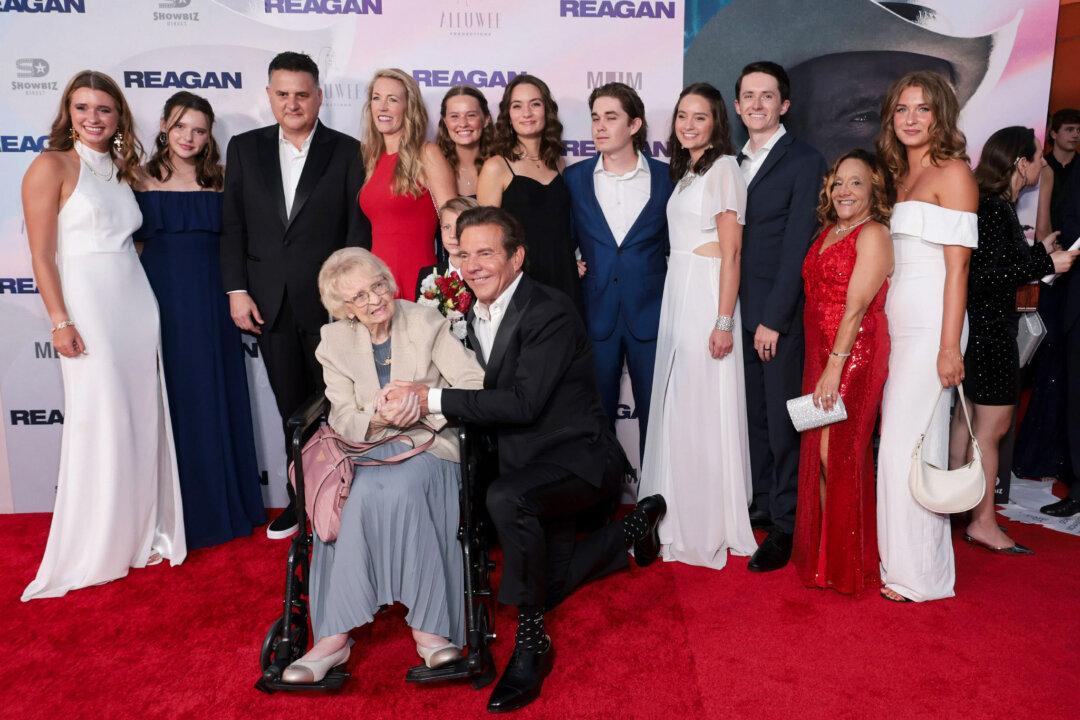Renowned Japanese manga artist Akira Toriyama, celebrated for his creation of the iconic Dragon Ball series, passed away last week at the age of 68 due to a brain condition, according to his production studio’s announcement on Friday.
Mr. Toriyama’s imagination gave birth to the legendary Dragon Ball universe, centered around the adventures of Son Goku, a young extraterrestrial possessing extraordinary strength and a distinctive monkey tail, as he embarks on a quest to collect the seven dragon balls.
Since its inception in the 1980s, the Dragon Ball saga has spread to audiences worldwide.
“It’s with profound sorrow that we announce his passing, leaving several ongoing projects unfinished, each imbued with his characteristic zeal,” the statement expressed. “While his departure is a loss, his rich legacy of manga and artistry endures, a testament to his talent and dedication.”
Tributes
Tributes poured in online from fans all over the world, with the official Among Us game account posting: “A Legend. Thank you Akira Toriyama for entertaining and inspiring so many of us. Rest in peace.”Life and Legacy
Mr. Toriyama, born on April 5, 1955, in Kiyosu City, Aichi Prefecture, began his journey as a manga artist at the age of 23. His debut in 1978 marked the commencement of a remarkable career, as he introduced his creative vision to the world through a short story published in the pages of Weekly Shonen Jump, a revered manga magazine among enthusiasts. He has been a working artist since 1978.In manga, he is better known for creating the science fiction comedy series “Dr. Slump” (1980-1984) and “Dragon Ball” (1984-1995). “Dragon Ball” has been adapted into four animated series: “Dragon Ball” (1986-1989), “Dragon Ball Z” (1989-1996), “Dragon Ball GT” (1996-1997), and “Dragon Ball Super” (2015-2018). Mr. Toriyama has provided character designs for several of the adaptations. As a video game designer, Mr. Toriyama is primarily known for co-creating the long-running series “Dragon Quest” (1986). He has continued to work in most of the series’ games. His works are credited with boosting the popularity of Japanese animation in the Western world. In 2019, Mr. Toriyama was named a Chevalier (knight) of the “Ordre des Arts et des Lettres” (“Order of the Arts and the Letters”) by France. It is a French order of merit, awarded to writers and artists.
During the 20th century, Nagoya became a center for automotive, Several manufacturing companies of the industry have their headquarters in Nagoya. By 1961, Mr. Toriyama started drawing pictures of animals and vehicles as a hobby. He was reportedly inspired by the animated film “One Hundred and One Dalmatians”(1961), as he was impressed by the film’s art style.
During his elementary school years, Mr. Toriyama had access to the manga collection owned by the older brother of a friend. He was fascinated by the science fiction series “Astro Boy” (1952-1968), which featured the adventures of a sentient android with superpowers. During his middle school years, Mr. Toriyama was increasingly fascinated with live-action films and television. He was a fan of the tokusatsu series (science fantasy series, using special effects) “Ultraman” (1966-1967). The series focused on the adventures of a gigantic superhero, who regularly defended the Earth from aliens and monsters. He also enjoyed kaiju films (films about giant monsters). His favorite film series was “Gamera” (1965-2006), which featured the adventures of a fire-breathing turtle.
Mr. Toriyama attended a high school that focused on teaching creative design to its students. Against the wishes of his parents, he decided to not pursue a college education. Shortly after graduating high school, Toriyama used his art skills to get hired at an advertising agency in Nagoya. He spent several years designing posters but was increasingly fed up with his job. He was repeatedly reprimanded for dressing casually at work. He quit his job at age 23 and started considering a professional career as a manga artist.
Trying to get an entry into the manga industry, Mr. Toriyama created a manga story that parodied the recent film “Star Wars” (1977). He submitted the story to a contest organized by the magazine “Weekly Shonen Jump,” hoping to win the magazine’s “Newcomer Award.” The story was rejected because it was a derivative work, and the contest was for original works. But magazine editor Kazuhiko Torishima liked Mr. Toriyama’s art style. He encouraged him to send more original material to the magazine.
Mr. Toriyama’s first published work was the story “Wonder Island” (1978). It featured a kamikaze pilot who had been stranded on an island for 35 years and was trying to find a way to escape. The story came last in a popularity contest, disappointing Mr. Toriyama. The sequel “Wonder Island 2” (1979) focused on the police searching for a missing criminal. It parodied elements from the film “Dirty Harry” (1971). This story was also considered a flop. Most of Toriyama’s early stories failed to impress his readers. He had more success with “Tomato the Cutesy Gumshoe” (1979), a story about a rookie detective. It was his first work featuring a female lead and was well-liked by the readers.
Mr. Toriyama decided to use a female lead in the next major effort. The result was the best-selling series “Dr. Slump.” (1980-1984) It focused on Arale Norimaki, a sentient robot in the form of a little girl. She had superhuman strength, but her naivety and inexperience landed her in trouble. The series also featured a cast of eccentric supporting characters. Among them was the shape-shifting superhero Suppaman, a parody version of Superman who was depicted as a pompous buffoon. The series became one of the most popular manga of its era, and received an animated adaption (which lasted from 1981 to 1986). Toriyama wanted to end the series after its first six months, but his publisher insisted that the story should be continued. In 1981, Toriyama won a “Shogakukan Manga Award” for his work on “Dr. Slump.”
Despite his success with a long-term series in the early 1980s, Mr. Toriyama continued to regularly submit one-shot stories for publication. He was frustrated when several of these stories met with lukewarm responses from his readers. At about this point in his career, he created his own artist’s studio, under the name “Bird Studio.” The name was a pun on his last name, as “tori” means “bird.” He started employing assistants to work on the background details of his stories.
Kazuhiko Torishima (Toriyama’s editor) noted that Mr. Toriyama enjoyed viewing kung fu films, but had never used martial arts elements in his stories. He suggested that Mr. Toriyama should try creating a kung-fu manga. Mr. Toriyama responded by creating the two-part story “Dragon Boy” (1983). It depicted a young martial artist who escorts a princess on a return journey to her home country. The story was warmly received, and Toriyama would later incorporate aspects of this story in “Dragon Ball.”
In 1984, Mr. Toriyama finally concluded the “Dr. Slump.” He had to promise his editor and publisher that he would soon start work on a replacement series. This new series was “Dragon Ball,” which lasted for 11 years. Toriyama produced 519 chapters of the manga, which were collected into 42 volumes. The story focused on the life of martial artist Son Goku from childhood to adulthood and gradually introduced the character’s wife and descendants. The series gained in popularity due to its large cast of colorful characters, and its exciting use of combat scenes. Mr. Toriyama reportedly used Jackie Chan’s films as the main inspiration for the fighting scenes.
Until the late 1980s, Mr. Toriyama had never worked in animation. His first substantial effort in the field was the animated film “Kosuke & Rikimaru: The Dragon of Konpei Island” (1988). He wrote the initial concept for the film, co-wrote its screenplay, and designed all of its characters.
In 1995, Mr. Toriyama decided to conclude the “Dragon Ball” manga with a low-key ending. Son Goku left the planet Earth to serve as the mentor to a reincarnated former foe, leaving room for a new generation of heroes. Mr. Toriyama wanted to imply that the story would continue, though he had no actual intention to write a sequel at that point. When the animated series “Dragon Ball GT” (1996-1997) was conceived as a sequel, Mr. Toriyama was hired as a character designer. For the following few years, he primarily produced short-lived manga series. Among them were “Cowa!”(1997-1998), “Kajika” (1998), and “Sand Land” (2000). In 2002, Mr. Toriyama made a promotional visit to the United States, as a number of his works were about to be reprinted in the American magazine “Shonen Jump.”
In 2005, Mr. Toriyama served as the main designer of an electric car for CQ Motors. It was not a commercial success, with only 9 vehicles being produced. In 2006, Mr. Toriyama and Eiichiro Oda created the crossover story “Cross Epoch.” It featured characters from “Dragon Ball” co-existing with fantasy characters from the series “One Piece” (1997-). Also in 2006, Mr. Toriyama served as a character designer for the video game “Blue Dragon.” The story featured a small group of heroes trying to stop the villain Nene’s efforts to massacre villagers.
In 2009, Mr. Toriyama was credited as both a creative consultant and an executive producer for the live-action film “Dragonball Evolution.” He reportedly cautioned the film’s producers that the film’s script was “bland” and uninteresting, but his suggestions to alter the script were ignored. The film was a commercial flop. Also in 2009, Toriyama created a promotional manga for the environmental organization “Rural Society Project.” In 2011, Mr. Toriyama helped raise awareness for the victims of the Tohoku earthquake and the subsequent tsunami.
From 2012 to 2013, Mr. Toriyama was part of the film crew for the animated feature film “Dragon Ball Z: Battle of Gods” (2013). It was the first theatrical animated film based on “Dragon Ball” since 1996. In the film, the god Beerus threatens to destroy the planet Earth. He only backs down when one of the heroes achieves godhood. Also in 2013, a touring exhibition displayed Mr. Toriyama’s manga manuscripts from “Dragon Ball.”
Mr. Toriyama served as the main screenwriter for the animated film “Dragon Ball Z: Resurrection F” (2015). The film featured the resurrection of the long-dead villain Frieza, who tries to improve his skills before seeking revenge. He continued to work on the film’s sequels until 2022. There were 18 volumes of the manga published between 2016 and 2022.







